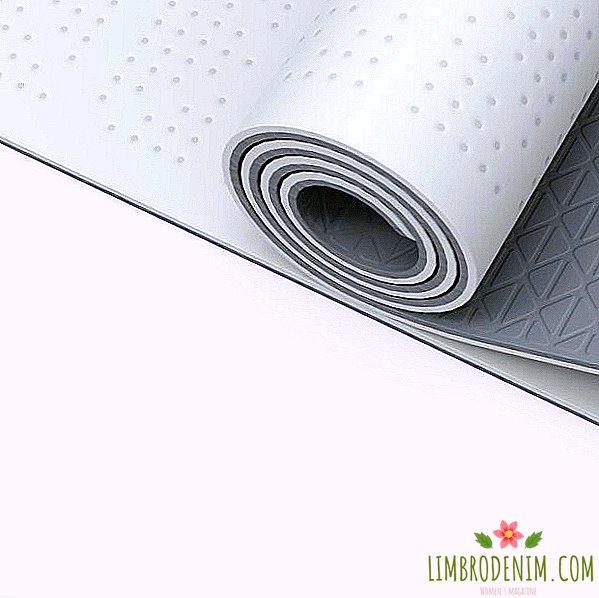Is it possible to complete the transition to "genderless" clothes
EVERYTHING IS BEGANTLY NEWS about the appearance of gender neutral departments in stores and about the release of collections that do not have sexual targeting. The new generation is growing more free in the choice of clothes and is no longer asking the question: what is the thing in front of them, male or female? In connection with this, the question arises: can fashion pass the point of no return, after which the division of clothing into male and female will become an anachronism?
Text: Svetlana Paderina

Over the centuries, women's and men's clothing differed both constructively and decoratively: men's and women's things suggested differences due to both the builds of both sexes and the difference in lifestyle that takes into account the division of classes into "male" and "female." But these differences were not always the same as now, when everything practical, ergonomic and expedient passes under the heading "masculine" - while women can afford all sorts of "excesses" like floral embroideries and frills. Suffice it to recall what kind of "indecent" by the standards of today, the silhouette bends had men's clothing of the XIX century and what kind of "unmanly" decor assumed even earlier.
And now, it would seem, the time has come when fashion is ready to shake off stereotypes. The emergence of a trend for gender-based clothing is no longer based only on simple, logically grounded facts, as it was just recently (comfortable men's things leaked into the women's wardrobe during the two world wars, which considerably redrew society), but also on social reflection. In this case, the adoption of people with different gender identity.
The question whether clothes should correspond to gender, age, status and so on has ceased to be modern: the progressive part of the fashion community agreed that the clothes now should not be anything to anyone - everyone is free to wear what he likes, what is comfortable, what gives emotions or helps express oneself. But there was another, fundamentally new question - if you still cancel the division into "m" and "f" in stores, then by what principle should you hang things: in size, height, style?
With the positioning of the universal collections of clothes, everything is clear, but with the design is not very: most of the gender or multi-gender labels offer things equally dimensionless, with a movable shoulder girdle, with a fuzzy fit at the waist, with the ability to roll up the sleeves and in a careful color scheme - we can not say that such a supposedly universal assortment will be able to please absolutely everyone.


Mass brands like H & M and Zara, joining the popular movement, rather "catch HYIP" than respond to specific requests. And these requests are as follows: going to the men's department, the woman is looking for more confident designs, better materials and more thoughtful details (for example, additional pockets). Men would like, for example, color diversity and the ability to legitimize comfortable dresses and skirts in their wardrobe. Instead, the gender-based fashion offers them all the same sweatshirts and “coveralls”, inventing nothing but a bicycle - the young people dressed in the same way in the 1990s, only then everyone used the capacious word “unisex”.
Another option is agender clothing with an artistic or historical bias, such as pink shirts with frills and flounces, jacquard jackets or flirty dresses, which are presented by male models like the young Spanish brand Palomo. This, too, has already happened - one only needs to google the fashionable archives of the 1970s or recall the aesthetics of glam rock. Unfortunately, it often looks far-fetched, theatrical and distant from modern life: the absurdly romantic fantasies of designer Charles Jeffrey certainly have their admirers, but it’s difficult to consider his images as a fashionable breakthrough.
By and large, the universal fashion would like to go further than the abolition of the traditional arrangement of zippers or classic tailor terminology (what men call a jacket, women a jacket) and discover some new, untouched possibilities and ideas. But evolutionary clothing is moving in the opposite direction from the armor of the knights and dragging down corsets, that is, to comfort, and comfort just does not imply universality - which is good and convenient for one, not necessarily comfortable for another.
Many women who choose clothes in the men's section can confirm this: they have to struggle with the length of the sleeves, now with the fit of the trousers, now with the search for the necessary proportions in general. Clothes are always built around the human body, and the task of globally re-inventing clothes, creating things that sit on different types of shapes and builds, requires fundamentally new technologies and materials.


On the territory of gender-neutral clothes, now mostly young and open to experiments are working, as the winner of the LVMH competition is the Japanese brand Douplet. In addition to it, there were two more designers with a similar philosophy in the finale: Ludovic de Saint Sernin makes fragile and touching clothes for androgins, and Matthew Adams Dolan tailors suits and coats based on wide-shouldered men's jackets and paints them in neon colors. A tremendous sense of humor, but the specific design is demonstrated by the American brand 69: baggy pants, kigurumi-style overalls, voluminous tunics, cocoons, into which people of any body size can wrap themselves and, as the brand suggests, of any gender.
Tilly & William, a brand from Brooklyn, tried to achieve absolute universality. Designers have developed "gender-neutral" clothing, which, uniting and transforming, gave rise to the endless variability of models and sets. This, by the way, is one of the viable options for making the gender mode universal with existing technological opportunities: finding new non-standard ideas for transformation - but so far the designer clothes are far from perfect and are apprehensively met by buyers. Brazilian designer Fabio Costa, working under the label NotEqual in the rational fashion genre: calm silhouettes, colors that do not touch the eyes, slight asymmetry and an attempt to generalize male and female models. You can also recall the recently appeared Russian brand Vatnique, whose authors, focusing on a mono-product, produce quilted oversized jackets “without sex restrictions”.
At a recent show of Louis Vuitton, futuristic design by Nicolas Ghesquière showed cisgender and transgender models, and the fluidity of clothing was broadcast, including through the design itself, without simplification. On the bomber jackets with sewn backstage you could elegantly change the sleeve length to any height. Jackets and jackets either had no fasteners at all, or were equipped with zippers. Translucent shirts combined elements of uniform and delicate romantic details - so that even the most conservative critic could not determine to whom they are addressed. Extra long T-shirts with bright, artistic prints were worn over the pants. And although a significant part of the collection was frankly "female" and was demonstrated by conventional models, it contained a hint that the future of the gender fashion may be different - and elegant as well.
PHOTO:Doublet, Ludovic de Saint Sernin, Not Equal





